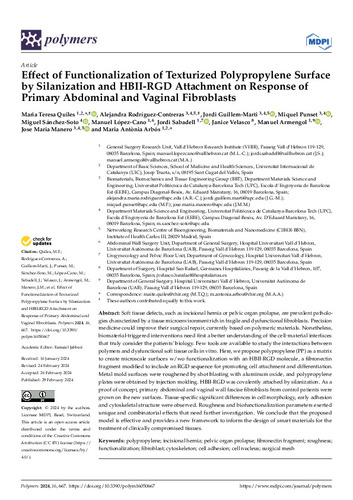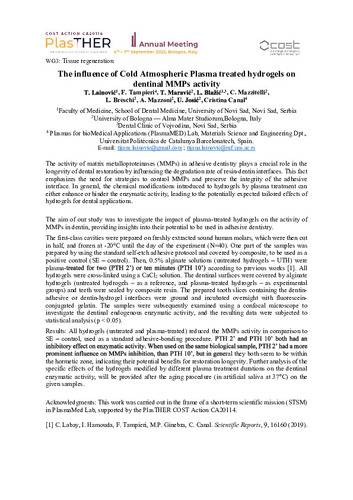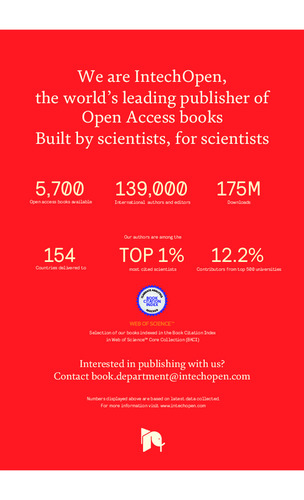BBT - Grup de recerca en Biomaterials, Biomecànica i Enginyeria de Teixits
El Grup de Biomaterials, Bioemecànica i Enginyeria de Teixits basa la seva recerca en el desenvolupament de biomaterials per a la regeneració i/o la reparació funcional de teixits i òrgans. Això comprèn el disseny de materials capaços de modular la resposta biològica del teixit receptor, donant lloc en alguns casos a la regeneració de teixits, i en altres a una perfecta integració del biomaterial, amb la recuperació funcional perduda.
El plantejament d'aquest objectiu és intrínsecament interdisciplinari, i exigeix d’una banda la caracterització dels materials a nivell físicoquímic i mecànic i, de l'altra, l'estudi de les seves interaccions amb les entitats biològiques a diferents nivells -proteïnes, cèl·lules i teixits-.
La recerca duta a terme pel grup BBT abasta tant aspectes fonamentals com d'altres més tecnològics, susceptibles de ser transferits a empreses del sector biomèdic.
El Grupo de Biomateriales, Biomecánica e Ingeniería de Tejidos basa su investigación en el desarrollo de biomateriales para la regeneración y / o la reparación funcional de tejidos y órganos. Esto comprende el diseño de materiales capaces de modular la respuesta biológica del tejido receptor, dando lugar en algunos casos a la regeneración de tejidos, y en otros a una perfecta integración del biomaterial, con la recuperación funcional perdida. El planteamiento de este objetivo es intrínsecamente interdisciplinario, y exige por un lado la caracterización de los materiales a nivel físico-químico y mecánico y, por otro, el estudio de sus interacciones con las entidades biológicas a diferentes niveles -proteínas, celulas y tejidos-.La investigación llevada a cabo por el grupo BBT abarca tanto aspectos fundamentales como otros más tecnológicos, susceptibles de ser transferidos a empresas del sector biomédico.
The Biomaterials, Biomechanics and Tissue Engineering Group carries out research into the development of biomaterials for the regeneration and/or functional repair of tissues and organs. There is a demand for the design of materials that are able to modulate the biological response of receiving tissues. In some cases this ability leads to the regeneration and neoformation of degraded tissue, and in others, the perfect integration of the biomaterial and the recovery of the lost function.
The Biomaterials, Biomechanics and Tissue Engineering Group carries out research into the development of biomaterials for the regeneration and/or functional repair of tissues and organs. There is a demand for the design of materials that are able to modulate the biological response of receiving tissues. In some cases this ability leads to the regeneration and neoformation of degraded tissue, and in others, the perfect integration of the biomaterial and the recovery of the lost function.
Col·leccions
-
Altres [1]
-
Articles de revista [439]
-
Conjunt de dades [3]
Enviaments recents
-
Effect of functionalization of texturized polypropylene surface by silanization and HBII-RGD attachment on response of primary abdominal and vaginal fibroblasts

(Multidisciplinary Digital Publishing Institute (MDPI), 2024-03-01)
(Multidisciplinary Digital Publishing Institute (MDPI), 2024-03-01)
Article
Accés obert
Realitzat a/amb: Vall d'Hebron Institut de Recerca / Universitat Internacional de Catalunya / Centro de Investigación Biomédica en Red. Bioingeniería, Biomateriales y Nanomedicina / Universitat Autònoma de Barcelona / Hospital Sant Rafael - Germanes Hospitalàries / Hospital Universitari Vall d'HebronSoft tissue defects, such as incisional hernia or pelvic organ prolapse, are prevalent pathologies characterized by a tissue microenvironment rich in fragile and dysfunctional fibroblasts. Precision medicine could improve ... -
The influence of Cold Atmospheric Plasma treated hydrogels on dentinal MMPs activity

(2023)
(2023)
Text en actes de congrés
Accés obert -
Hydrogels as models to evaluate the effect of non ther mal plasma treatment on living tissues

(2023)
(2023)
Comunicació de congrés
Accés obert -
Phase composition of calcium phosphate materials affects bone formation by modulating osteoclastogenesis

(Elsevier, 2024-03)
(Elsevier, 2024-03)
Article
Accés obert
Realitzat a/amb: Université de Nantes / Universität Wien / Ludwig Boltzmann Institut für Traumatologie / NUIG National University of Ireland Galway / Institut de Bioenginyeria de Catalunya / Université Toulouse III - Paul SabatierHuman mesenchymal stromal cells (hMSCs) seeded on calcium phosphate (CaP) bioceramics are extensively explored in bone tissue engineering and have recently shown effective clinical outcomes. In previous pre-clinical studies, ... -
Hybrid hydrogels with stimuli-responsive properties to electric and magnetic fields

(2023)
(2023)
Capítol de llibre
Accés obertHydrogels are a promising type of soft material featuring great similarity to biological tissues due to their inherent characteristics, such as high-water content, flexibility, softness, or low elastic modulus. Imparting ... -
Toughening 3D printed biomimetic hydroxyapatite scaffolds: polycaprolactone-based self-hardening inks

(Elsevier, 2024-02)
(Elsevier, 2024-02)
Article
Accés obert
Realitzat a/amb: Institut de Recerca Sant Joan de Déu / Mimetis Biomaterials / Centro de Investigación Biomédica en Red. Bioingeniería, Biomateriales y Nanomedicina / Institut de Bioenginyeria de CatalunyaThe application of 3D printing to calcium phosphates has opened unprecedented possibilities for the fabrication of personalized bone grafts. However, their biocompatibility and bioactivity are counterbalanced by their high ... -
Biodegradable conducting PVA-hydrogel based on carbon quantum dots: study of the synergistic effect of additives

(2024-02-03)
(2024-02-03)
Article
Accés obertConductive hydrogels are becoming one of the most important milestones for the development of new scaffolds, biosensors, supercapacitors, and green electronics within the field of biomedicine. In this work, we study the ... -
Injectable plasma-treated alginate hydrogel for oxidative stress delivery to induce immunogenic cell death in osteosarcoma

(John Wiley & sons, 2023-12-21)
(John Wiley & sons, 2023-12-21)
Article
Accés obertCold atmospheric plasma (CAP) is a source of cell-damaging oxidant molecules that may be used as low-cost cancer treatment with minimal side effects. Liquids treated with cold plasma and enriched with oxidants are a modality ... -
Additive manufacturing of Ni-free Ti-based shape memory alloys: A review

(Elsevier, 2024-04-01)
(Elsevier, 2024-04-01)
Article
Accés obertNi-free Ti-based Shape Memory Alloys composed of non-toxic elements have been studied as promising candidates for biomedical applications. However, high tool wear makes them complex to manufacture with conventional techniques. ... -
Editorial: “Peptides in biomaterials science: New trends and applications”

(2022-01)
(2022-01)
Article
Accés obert -
Fiber alignment in 3D collagen networks as a biophysical marker for cell contractility

(Elsevier, 2023-12-01)
(Elsevier, 2023-12-01)
Article
Accés restringit per política de l'editorialCells cultured in 3D fibrous biopolymer matrices exert traction forces on their environment that induce deformations and remodeling of the fiber network. By measuring these deformations, the traction forces can be reconstructed ... -
Immediate-sustained lactate release using alginate hydrogel assembled to proteinase K/polymer electrospun fibers

(Elsevier, 2023-05-31)
(Elsevier, 2023-05-31)
Article
Accés restringit per política de l'editorial
Realitzat a/amb: Universidad Nacional de Río Cuatro / Institut de Bioenginyeria de Catalunya / Centro de Investigación Biomédica en Red. Bioingeniería, Biomateriales y NanomedicinaThis work proposes a microfibers-hydrogel assembled composite as delivery vehicle able to combine into a single system both burst and prolonged release of lactate. The prolonged release of lactate has been achieved by ...











